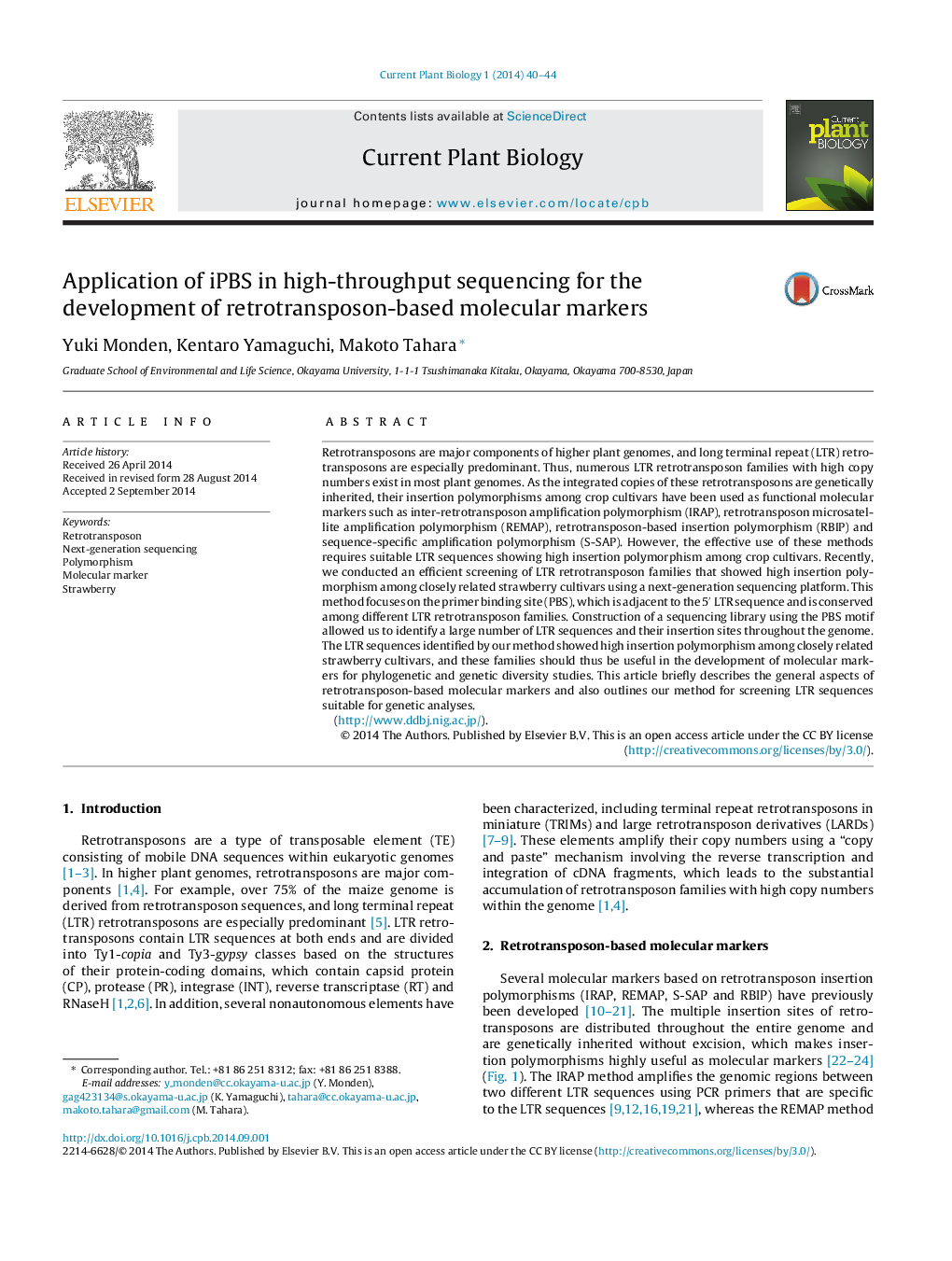| Article ID | Journal | Published Year | Pages | File Type |
|---|---|---|---|---|
| 571810 | Current Plant Biology | 2014 | 5 Pages |
•Development of retrotranposon-based molecular markers requires suitable LTR sequence.•We efficiently screened LTR sequences showing high insertion polymorphism.•Our method focused on the PBS which is highly conserved among LTR families.•High-throughput sequencing using PBS output diverse LTRs and their insertion sites.•LTR sequences identified by our method should be useful for genetic analyses.
Retrotransposons are major components of higher plant genomes, and long terminal repeat (LTR) retrotransposons are especially predominant. Thus, numerous LTR retrotransposon families with high copy numbers exist in most plant genomes. As the integrated copies of these retrotransposons are genetically inherited, their insertion polymorphisms among crop cultivars have been used as functional molecular markers such as inter-retrotransposon amplification polymorphism (IRAP), retrotransposon microsatellite amplification polymorphism (REMAP), retrotransposon-based insertion polymorphism (RBIP) and sequence-specific amplification polymorphism (S-SAP). However, the effective use of these methods requires suitable LTR sequences showing high insertion polymorphism among crop cultivars. Recently, we conducted an efficient screening of LTR retrotransposon families that showed high insertion polymorphism among closely related strawberry cultivars using a next-generation sequencing platform. This method focuses on the primer binding site (PBS), which is adjacent to the 5′ LTR sequence and is conserved among different LTR retrotransposon families. Construction of a sequencing library using the PBS motif allowed us to identify a large number of LTR sequences and their insertion sites throughout the genome. The LTR sequences identified by our method showed high insertion polymorphism among closely related strawberry cultivars, and these families should thus be useful in the development of molecular markers for phylogenetic and genetic diversity studies. This article briefly describes the general aspects of retrotransposon-based molecular markers and also outlines our method for screening LTR sequences suitable for genetic analyses.(http://www.ddbj.nig.ac.jp/).
Graphical abstractFigure optionsDownload full-size imageDownload as PowerPoint slide
